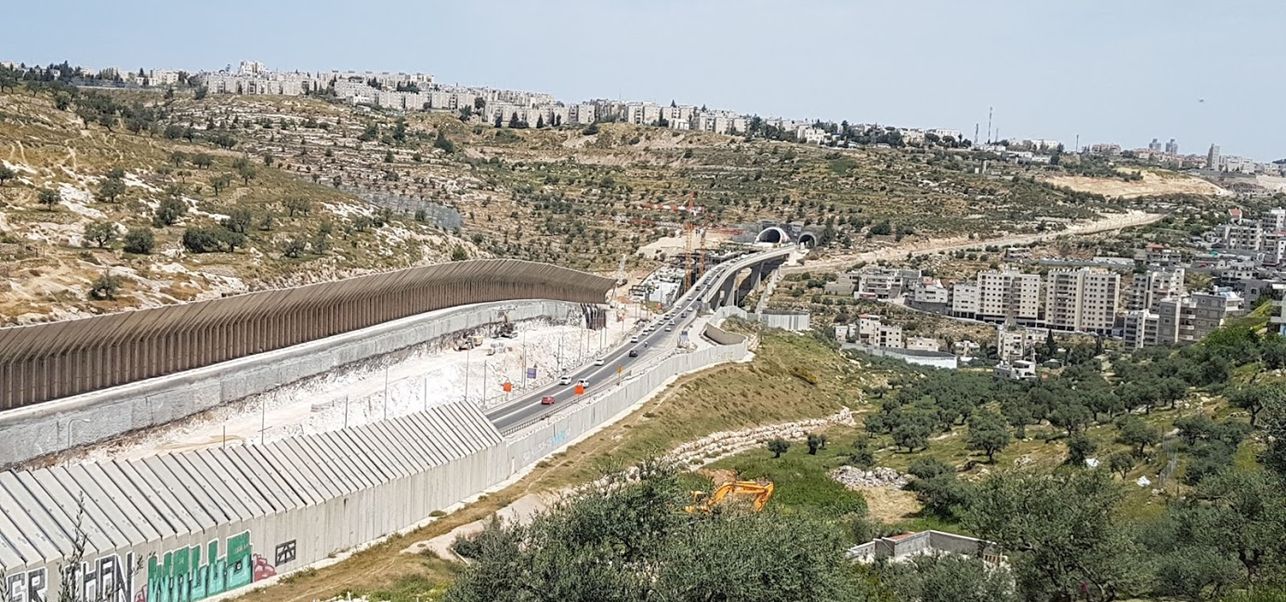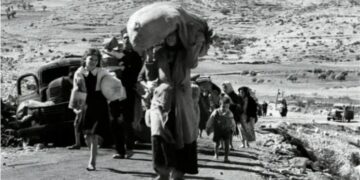On 13 September 2021, the Israeli Foreign Minister Yair Lapid proposed, at a conference at the Institute for Counter-Terrorism Policy of Reichman University, what he believes a “new vision” for Israel’s relation with Gaza, stating that Israel must advance towards a “multi-year economic process” in the Gaza Strip in exchange for security. Minister Lapid presented a multi-stage strategy for Gaza’s economic development that would involve repairing Gaza’s infrastructure in exchange for international scrutiny and Hamas’ silence. The two sides (Israelis and Palestinians) would witness, according to Lapid, initiatives that are more ambitious in the second stage of the plan.[1] However, Lapid’s plan has no mention of a true and just political agenda, that would see at the end of the tunnel an end to the Israeli occupation to the Palestinian territory and the establishment of a viable, contiguous, sovereign, and independent Palestinian state. Rather, he referred to an economic plan that would ease friction between the two sides and open economic opportunities for Palestinians without a clear political solution to the conflict.
Israel has long adopted a ‘divide and conquer’ strategy, which aimed at advancing an annexation plan that would see more land, grab, with less Palestinians under its control. Israel has always justified its unilateral moves in the West Bank on security pretexts; the most famous of which was constructing the Separation wall, which Israel claimed is being built to ensure settlers safety and security in the West Bank settlements. In addition to constructing, bypass roads to connect Israeli settlements in the West Bank with each other; with settlements in occupied East Jerusalem, and with those inside the 1949 Armistice Line (Green Line); while fragmenting the West Bank territory into small and disconnected cantons, further hardening the lives of Palestinians.
 Map 1: The Israeli Separation Wall in the occupied West Bank
Map 1: The Israeli Separation Wall in the occupied West Bank
Lipid’s proposed plan turns all eyes on the Gaza Strip where only the Gaza Strip is only part of the story. Separating the Gaza strip from the West Bank has been one target that Israel pursued over the years of the occupation, most notably following its unilateral withdrawal[2] from the Strip in August 2005 which was followed by strict sea and border control, imposing movement restrictions, isolation, reducing fishing area allowed to Palestinians by more than the half allowed (from 20 miles to 3-6 miles) and imposing a security zone along the northern and eastern borders of the strip which until today constitutes around 24% of the total Gaza Strip area, that comes under the full Israel control with no Palestinian Access to it at all.
 Map 2: The Israeli Buffer zone along the northern and Eastern sides of the Gaza Strip
Map 2: The Israeli Buffer zone along the northern and Eastern sides of the Gaza Strip
In May 2005, few months before the implementation of the Israeli unilateral withdrawal move of 2005[3], the Israeli occupation Minister, Shaul Mofaz that time, declared and emphasized that “the withdrawal of Jewish settlers from Gaza will allow Israel to extend its borders into the West Bank and enable Israel to maintain Jerusalem as the unified capital of the Jewish state.” This has been obvious through Israel’s lengthy years of blockade on the Gaza Strip especially after the unilateral redeployment of 2005, which paved the way for Israel to advance an annexation strategy in the occupied West Bank, at the expense of Palestinians’ lands and rights and has separated it totally from the West Bank in breach violation of what has been agreed upon in OSLO II Interim agreement of 1995, which viewed the two geographical territories as one, most notably ARTICLE XI of the ISRAELI-PALESTINIAN INTERIM AGREEMENT of 1995 which stated that “The two sides view the West Bank and the Gaza Strip as a single territorial unit, the integrity and status of which will be preserved during the interim period”; and Article XXXI, also provides that “Neither side shall take any step that will change the status of the West Bank and the Gaza Strip pending the outcome of the permanent status negotiations”.
The annexation of parts of the occupied West Bank, “Area C”, requires Israel to always ensure tight separation and isolation of the Gaza Strip from the West Bank area, to maintain a “strict security-status” in the West Bank while implementing its unilateral annexation moves. Over the years of the Israeli occupation, Israel has built 199 Israeli settlements in the West Bank housing more than 850,000 Israeli settlers today. Settlements expansion has been going at an incredibly accelerated pace where tens of thousands of settlements units were built along with hundreds of plans pending implementation in the occupied West Bank, including East Jerusalem. Since 1992 the area occupied by Israeli settlements in the West Bank tripled (from 77 km square to 201 km square) along with settlers’ population increasing from 248 thousand settlers, to more than 850 thousand today.
 Map 3: Area C of the West Bank
Map 3: Area C of the West Bank
Naftali Bennett initiative of 2012, “THE ISRAEL STABILITY INITIATIVE,” addressed “the separation of Gaza from the West Bank” as one essential move that Israel must be implemented in order to prevent violence, instability, and problems of the Gaza Strip into the quite areas of the West Bank, as stated. Bennett also asserted Israel’s full support to full sovereignty over the areas classified as “C“ and a full Israeli security umbrella for all of the West Bank area.
In April 2019, and prior to the Israeli elections which were to take place on 23 April 2019, Micah Goodman, the president of Beit Prat, a network of “Torah” study which promotes Jewish learning, activism and community building in Israel, published an article[4] in which he introduced eight steps, namely confidence building measures, that would help in shrinking the conflict between Israelis and Palestinians in the occupied State of Palestine; something that would amount to economic peace and enhance Palestinians’ lives through economic improvements, without jeopardizing Israel’s security, as stated.
Goodman stated that Israeli Central Command and Israeli Occupation Planning Directorate devised a strategy in the early 2000s, called “Keep It Flowing[5]”, an infrastructure Investment project that would allow the creation of Palestinian controlled new roads, tunnels and bridges to connect Palestinian localities with each other without creating security threats to settlements. However, the lands on which these new roads/tunnels/bridges would be built are occupied Palestinian lands, and that Palestinians will pay the price of constructing the new Roads in the occupied West Bank; Additionally, the new roads are intended to divert their access of the “Israeli by-pass roads”, originally constructed on occupied Palestinian land – to new roads so that they won’t have to access roads that are shared with Israeli settlers; thus, creating separate Road Network for Palestinians and maintaining Israeli settlers’ security.
The separation of Roads between Israeli and Palestinians was clear in the initiative presented by the Israeli Transportation Minister, Miri Regev, in November 2020 which called on the Israeli Government to expand the availability of public transportation for the first time to Israeli settlements in the in the occupied West Bank. Regev, presented to the heads of settlement councils in occupied West Bank a master plan for transportation, which included the construction of new bypass roads, tunnels and bridges in addition to expanding several existing bypass Roads in the occupied West Bank for Israeli settlers and Palestinians. However, Maps presented in the plan showed Palestinian-only separation roads in various sites east and southeast of Jerusalem[6] such as the Fabric of Life Road in east Jerusalem, the under-construction Road 60 south of Bethlehem Governorate and a number of new bypass roads north of the West Bank.
 Map 4: Miri Regev Transportation Plan
Map 4: Miri Regev Transportation Plan
Goodman, in his article, included expanding the Palestinian Autonomous Zones and land reallocation as essential confidence building measures that would allow Palestinians to thrive, grow, and prosper in their own way in the future with Israel ceding to the Palestinians a percentage of Area C in order to enlarge the autonomous areas (for economic development and industrial estates). However, Israel’s unilateral moves on the ground ever since its occupation of the West Bank and up until today has resulted in control of almost 67% of area “C”, in the occupied West Bank; where in addition to building settlements and outposts, Israel used military order as a tool to annex more land for Closed Military Areas, Nature Reserves, Firing and Combat Zones, settlements Jurisdiction areas and other Israeli pretexts, etc.
To conclude,
Though Lapid’s so-called Development/Economic plan suggested a vision for a long-term SETTLEMENT between the Israeli and the Palestinians in the Gaza Strip, the plan enforces “economy for security” as a pre-condition for that settlement to happen. The plan also presents the interests of the Israeli occupation in the Gaza Strip, eyeing the World’s attention to the illusion of an economic peace in the Gaza Strip, buys time to continue its settlement program in the occupied West Bank; while Ignoring a real political solution to the conflict that would see at the end, the establishment of a viable and contiguous Palestinian state on the 1967 borders.
[1] Goodman, M. (2021). Eight Steps to Shrink the Israeli-Palestinian Conflict. Retrieved 9 September 2021, from https://www.theatlantic.com/ideas/archive/2019/04/eight-steps-shrink-israeli-palestinian-conflict/585964/
[2] In 2005, the former Israeli Prime Minister Ariel Sharon suggested a unilateral disengagement plan that was approved by the Israeli Knesset in 2005.
[3] That Israel pulls out of the Gaza Strip, including all Israeli settlements, and redeploy outside the Strip’s boundaries.
[4] Eight Steps to Shrink the Israeli-Palestinian Conflict|https://www.theatlantic.com/ideas/archive/2019/04/eight-steps-shrink-israeli-palestinian-conflict/585964/Easing Palestinians’ travel abroad and enhancing their access to the world was another step stated in Goodman’s article, in which he stated it could be done in two ways; first, by minimizing (Palestinians) waiting time at Allenby Bridge, particularly by deploying innovative technical tools to speed up and smooth border crossings and Second; enabling Palestinians to fly overseas through Ben Gurion Airport through direct, secured shuttles, connecting the West Bank to Israel’s international airport.
[5]Goodman, M. (2021). Eight Steps to Shrink the Israeli-Palestinian Conflict. Retrieved 16 September 2021, from https://www.theatlantic.com/ideas/archive/2019/04/eight-steps-shrink-israeli-palestinian-conflict/585964/
[6] How Israel’s Settlement-Separation Roads Speed Towards One State… | Balfour Project. (2021). Retrieved 13 September 2021, from https://balfourproject.org/how-israels-settlement-separation-roads-speed-towards-one-state/?utm_source=rss&utm_medium=rss&utm_campaign=how-israels-settlement-separation-roads-speed-towards-one-state
Prepared by:
The Applied Research Institute – Jerusalem













